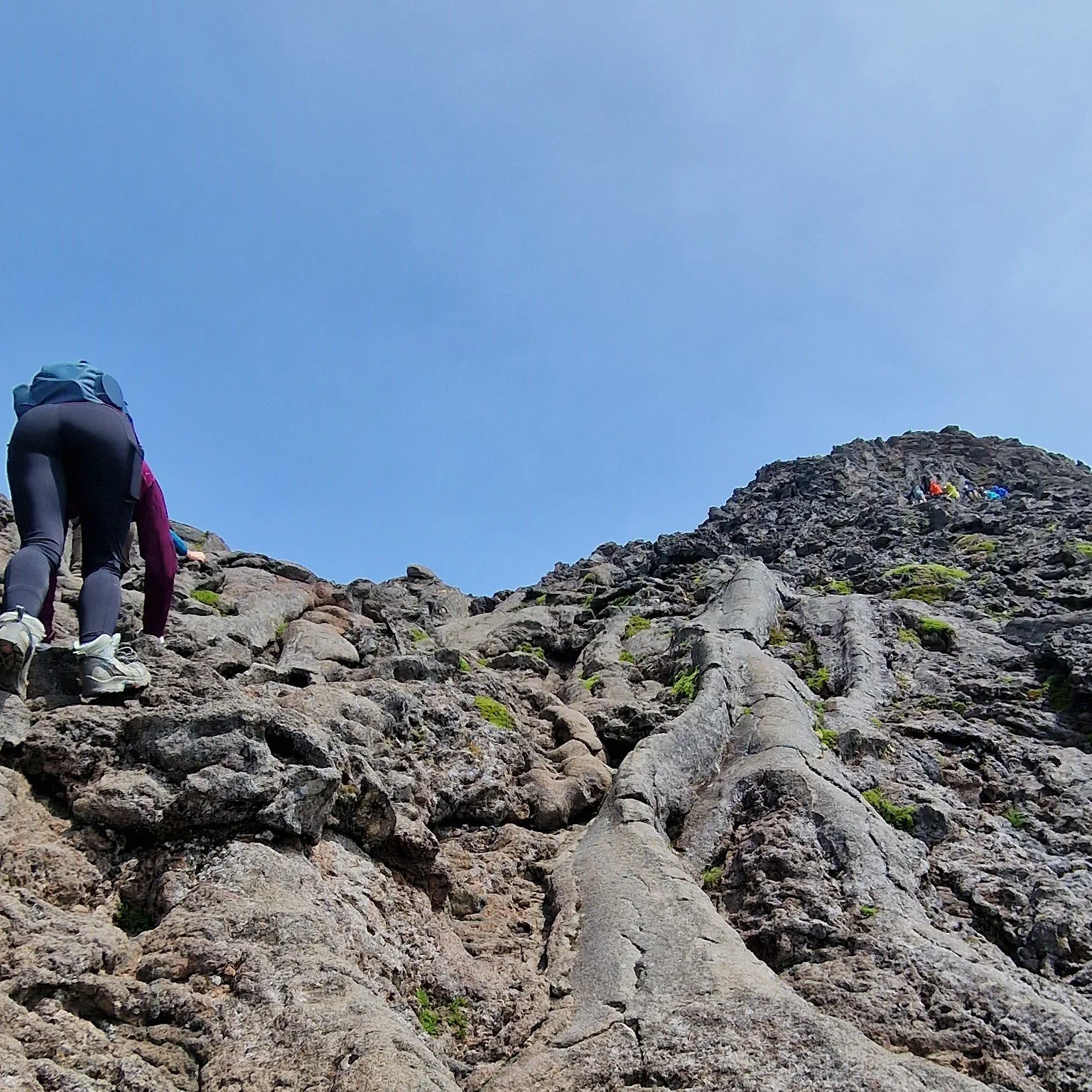Pico Mountain
In 2023, the ultimate expedition led us to the Azores. There, we tackled Portugal's highest peak, Mount Pico on Pico Island. Its elevation surpasses any other peak in the Azores by more than double. Standing at 2,351 meters tall. Pico is a dormant stratovolcano, with a pit crater on its summit.
Getting to the Azores
Our trip began in London, setting course to Lisbon, Portugal. The second leg of our flight took us to the vibrant Sao Miguel Island, “The Green Island”. The blues and greens of the lagoons and mountainsides radiate with an almost electric intensity.
After soaking in Sao Miguel’s beauty for a few days, a short flight ferried us to our main destination: Pico Island.
From the airplane window, Mount Pico teased its majestic presence. The deceptive "small" hill atop the mountain is another 100 meters of sheer vertical rise.
Pico Mountain Climb
Our first order of business was to visit the mountain base camp. Hikers venturing without a guide are required to check in at Casa da Montanha. Serving as the singular entry point to the mountain, it acts as the base of operations. A fee is collected per climber, and in return, a GPS tracker is issued to ensure your safety.
The ascent commenced once we had our GPS, and we navigated a zigzagging trail leading up to the apex.
The mountain's only trail is straightforward. It spans 10 kilometers and gains 1145 meters in elevation. Some say that a guide is essential for this climb. We chose to climb unguided and, found the trail to be well marked by 47 numbered poles.
The real challenge lay in the gusts that reached speeds of up to 55 km/h. Their intensity only escalated, especially during the steeper sections of our climb.
There was one silver lining to the intense winds; They dispersed the clouds, unveiling breathtaking vistas.
The final push towards the crater rim proved steep. Keep in mind the ground you are hiking on is volcanic rock. The trail does flatten out at intervals, which was helpful. It gradually guided us around the mountain to an opening in the crater's wall.
The peak of this dormant volcano reveals a vast crater. This is pole number 44. To truly reach the summit, known as Mt. Piquinho, another arduous 100-meter rock scramble awaited us. This forced us to ditch our sticks and tackle it head-on.
Here, atop the exposed peak, we were met with relentless 60+ km/h winds. If the conditions were forecasted to be more severe or coupled with rain, we'd have chosen another day.
You are completely exposed to the elements on Pico. Safety first, always.
The summit rewarded us with unparalleled panoramas of the surrounding Azores Islands. Including sprawling mountains and the endless ocean beyond.
We also chanced upon several thermal vents spewing hot air and steam. We could feel the heat emanating from the rock.
The final push to the top? Absolutely worth every effort!
Back Down to Explore
The descent follows the same route. It still presented its own challenges with the presence of lava tube formations and sections demanding vertical climbs.
Once back down, we returned our GPS tracker.
They gave us a certificate for climbing Mt. Pico. Not something you receive after every mountain summit.
With the mountain conquest behind us and an extra day on Pico Island, our next stop was Faial Island. There, we rested in lodgings boasting spectacular views of the mountain we had stood atop.
Final Thoughts
In wrapping up our 2023 expedition to the Azores, it was nothing short of extraordinary. From the vibrant hues of Sao Miguel Island to the challenging ascent of Mount Pico. Every moment was an adventure in itself.
The elements may have tested our resolve, but the rewards were unparalleled. As adventurers, we seek experiences that push our boundaries, and Pico is an example of that.
As we gazed at Pico from Faial Island, it served as a vivid reminder of nature's grandeur and our relentless pursuit to embrace it.
If the Azores isn't on your list yet, it should be!
Be sure to subscribe to the blog and follow us on Instagram to keep up with our adventures.































